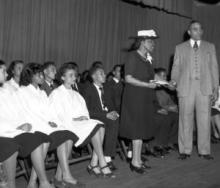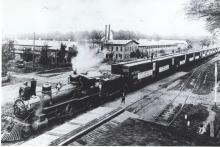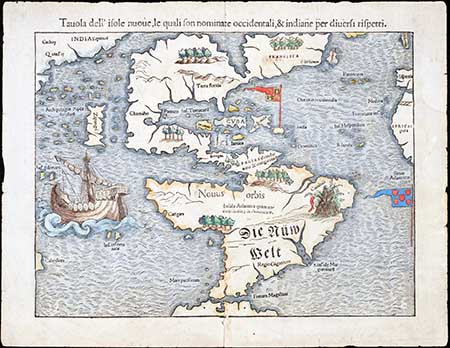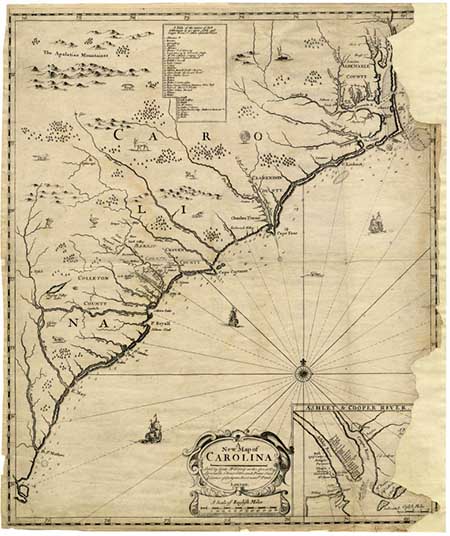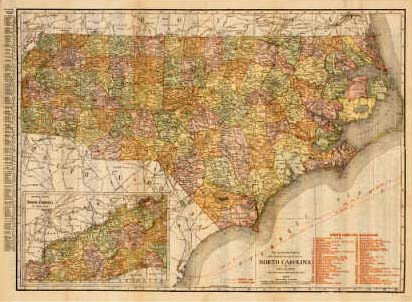Freelon, Philip Goodwin
Freelon, Philip Goodwin
March 26, 1953- July 9, 2019
 Philip Freelon was an American architect. He was born in Philadelphia, Pennsylvania to Elizabeth Neal Freelon and Allan Randall Freelon. Elizabeth was an educator and Allan was a sales and marketing executive. Philip grew up in a household that valued education, arts, and culture. His grandfather, Alan Randall Freelon, Sr., was a well-known oil painter during the Harlem Renaissance. In interviews, Philip often mentioned that his grandfather inspired him to pursue a career in architecture. Later African American architects like Julian Abele and Paul R. Williams also influenced Freelon’s career.
Philip Freelon was an American architect. He was born in Philadelphia, Pennsylvania to Elizabeth Neal Freelon and Allan Randall Freelon. Elizabeth was an educator and Allan was a sales and marketing executive. Philip grew up in a household that valued education, arts, and culture. His grandfather, Alan Randall Freelon, Sr., was a well-known oil painter during the Harlem Renaissance. In interviews, Philip often mentioned that his grandfather inspired him to pursue a career in architecture. Later African American architects like Julian Abele and Paul R. Williams also influenced Freelon’s career.
Freelon attended Hampton University in Virginia (then known as the Hampton Institute) from 1971 until 1973. He transferred to North Carolina State University’s (NCSU) College of Design and received his bachelor’s degree in environmental design in architecture in 1975. He would later credit his time spent at NCSU as being beneficial to his growth as an architect. After earning his master’s degree from Massachusetts Institute of Technology in 1977, Freelon became the youngest person to pass the Architecture Registration Exam in North Carolina at the age of 25.
In 1979, Phillip married Nnenna Chinyere, a well-known jazz singer. After settling in Durham, Freelon served as an adjunct professor for NC State’s College of Design and as a member of the university’s Board of Trustees. He tried to become a tenured professor at NC State, but moved to Houston when the university would not offer tenure. He moved back to Durham two years later, and joined O’Brien/Atkins Associates, an engineering and architecture firm, in Research Triangle Park (RTP). By 1989, Freelon was the vice president of the architecture division of the same company.
Later in 1989, Freelon received the Loeb Fellowship and attended Harvard University Graduate School of Design. After completing the independent study, he returned to Durham in 1990 and became the founder and CEO of The Freelon Group. The Freelon Group would later become the largest African American-owned architectural firm in the United States. Freelon believed that the average person should experience “beautiful inspiring architecture...every day.” Freelon further directed the mission of the company and committed it to building structures that would reduce the need for prisons. The company started by renovating libraries at elementary schools, later playing a major role in structures like public libraries. The Freelon Group also redesigned major public installations in Durham, like Hillside High School, Hope Valley Elementary School, the Durham Bulls Athletic Park, the Durham Transportation Center, and the Durham Human Services Complex. The Freelon Group also contributed styles and designs to other projects throughout North Carolina, such as the Raleigh-Durham International Airport Parking Deck, and the Harvey B. Gantt Center for African American Arts and Culture in Charlotte. In 2001, The Freelon Group received the American Institute of Architects’ (AIA) Outstanding Firm Award. The Outstanding Firm Award is the highest honor that can be given to a firm by the North Carolina chapter of the AIA.
In 2009, The Freelon Group was named the lead architect on the National Museum of African American History and Culture (NMAAHC) project in Washington D.C. The NMAAHC was completed in 2016 and it became the largest museum that focuses primarily on the history of African American people in the United States. The opening of the museum in September 2016 was honored with a speech from President Obama. President Obama earlier appointed Freelon to the National Commission of Fine Arts in 2011.
In 2016, before the opening of the museum, Freelon was diagnosed with ALS (Amyotrophic lateral sclerosis). ALS currently has no cure, but Freelon believed that research for a cure was simply underfunded. He formed the Freelon Foundation and created a campaign called, “Design a World Without ALS.” The campaign raises money for research. A benefit concert was held in April 2017 at Durham’s Carolina Theatre. It featured his wife and her colleagues and raised over $150,000 for the Duke ALS Clinic. A 2023 episode of Independent Lens documented Philip Freelon’s experience with ALS.
Philip Freelon died on July 9, 2019. He was survived by his wife, their daughter, Maya, and their two sons, Deen and Pierce.
Freelon’s vision and mission is present in places beyond North Carolina. His devotion to public spaces like museums and libraries, and artistic expression of the African American experience can be seen in locations like: The National Center for Civil and Human Rights in Atlanta, the Reginald F. Lewis Museum of Maryland, the Museum of the African Diaspora in San Francisco, California, Emancipation Park in Houston, Texas and the Tenley and Anacostia branches of the District of Columbia Public Library System. Freelon also dedicated his mission to supporting African American architects and academics:
...the fact remains that only two percent of architects are black. And that statistic is even less if you count the number of blacks in academia for architecture as well. That was one of the main reasons I decided to also become a professor, so that I could help mentor young aspiring black architects within the classroom. (Freelon, 2017)
Freelon’s legacy also includes his interest in educating others. He served as a professor and visiting lecturer at many universities, including: Harvard University, MIT, University of California, Berkeley, University of Virginia, Auburn University, University of Maryland, and others throughout the United States. He also contributed to the design and buildings of university campuses like North Carolina Central University in Durham, Elizabeth City State University in Elizabeth City, North Carolina Agricultural and Technical University in Greensboro, Morgan State University in Maryland, and North Carolina State University.
 His company, The Freelon Group merged with Perkins+Will in 2014. Freelon served as the Managing Director and Design Director of the RTP, North Carolina Office until 2017. Freelon created, in partnership with the company, the Phil Freelon Fellowship fund at Harvard University in 2016. Freelon’s mission to guide underrepresented groups of learners was important to the creation of the Fellowship Fund:
His company, The Freelon Group merged with Perkins+Will in 2014. Freelon served as the Managing Director and Design Director of the RTP, North Carolina Office until 2017. Freelon created, in partnership with the company, the Phil Freelon Fellowship fund at Harvard University in 2016. Freelon’s mission to guide underrepresented groups of learners was important to the creation of the Fellowship Fund:
I think that the challenge of broadening the profession and making it more inclusive has to be approached from different angles…That is why I, along with my colleagues at Perkins+Will, decided to fund a fellowship that targets underrepresented groups…The overall goal is to improve the profession by bringing in different voices and different visions. Without more blacks and other people of color, we all lose an opportunity for a more expansive viewpoint and a richer environment for creativity. (Freelon, 2017)
During his career, Freelon and the Freelon Group received multiple awards, such as the The Jefferson Award for Public Architecture (2009), The American Institute of Architects Gold Medal (2010), and the North Carolina Award in the category of Fine Arts (2017).
Philip Freelon’s personal papers (1975-2019) are held by North Carolina State University. A children's book about Freelon's career, Dream Builder: The Story of Architect Philip Freelon, was also released in 2020.
2 August 2023 |

